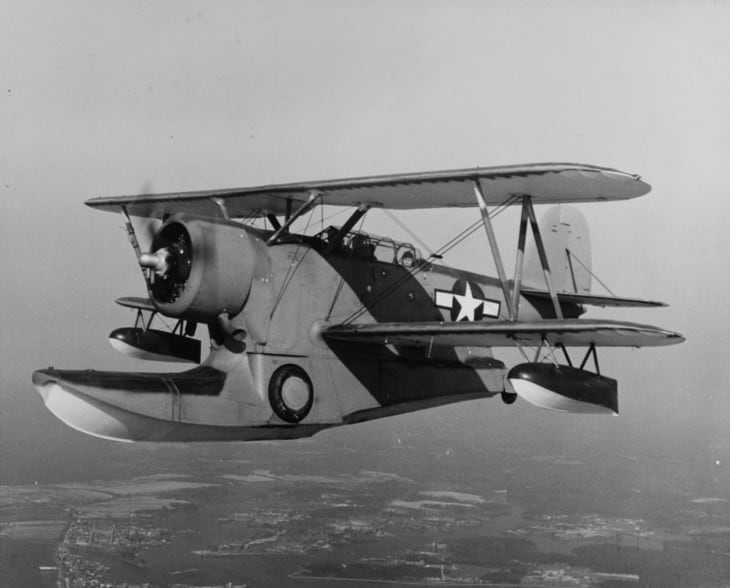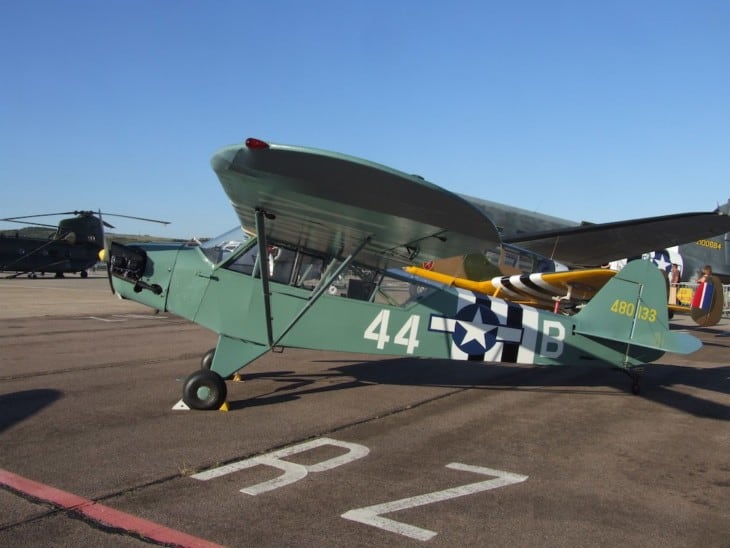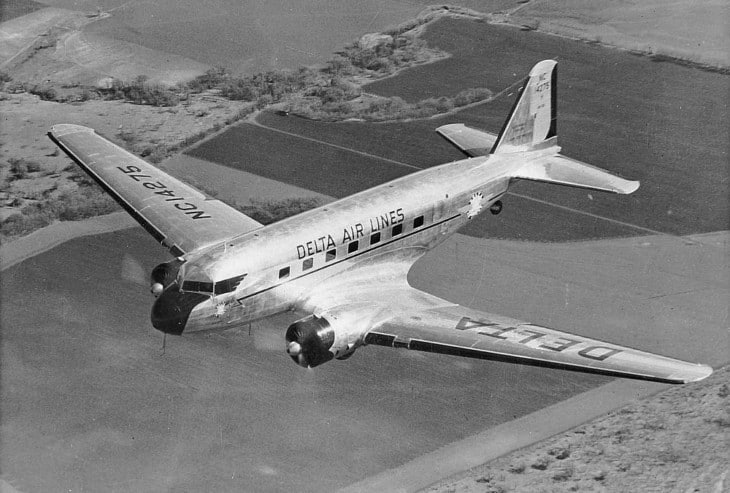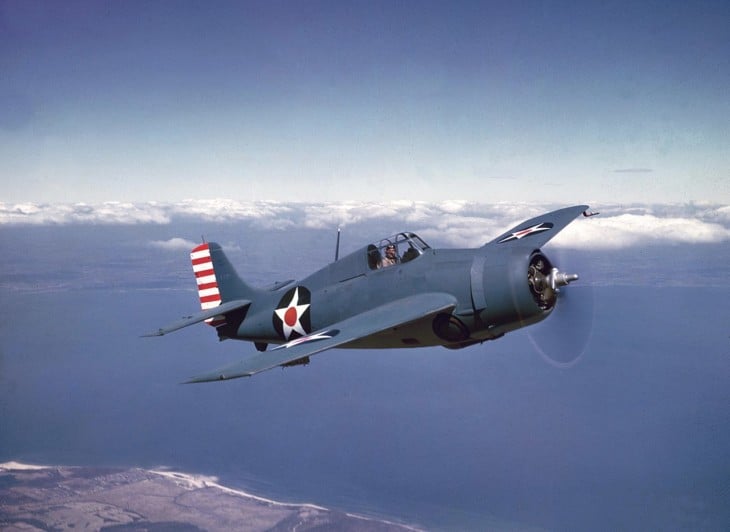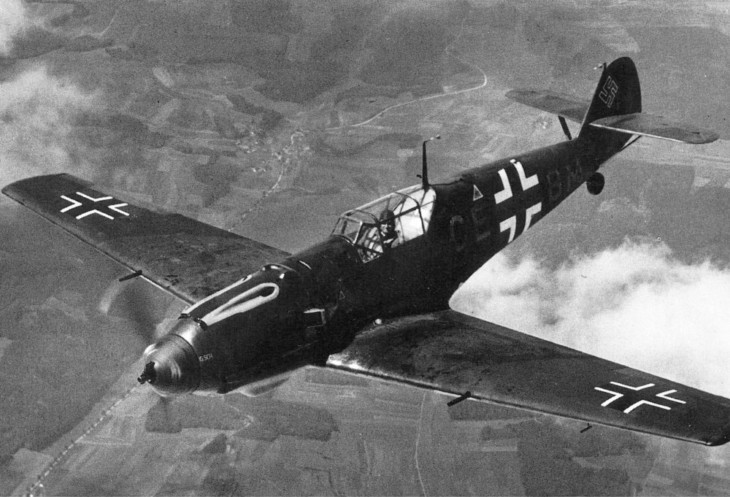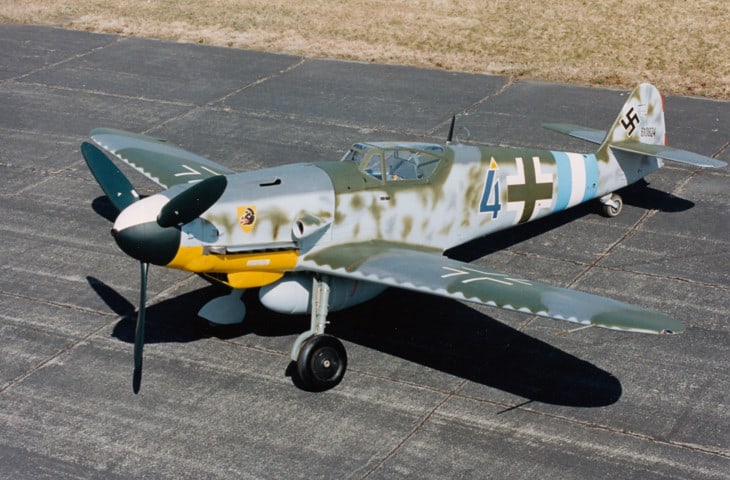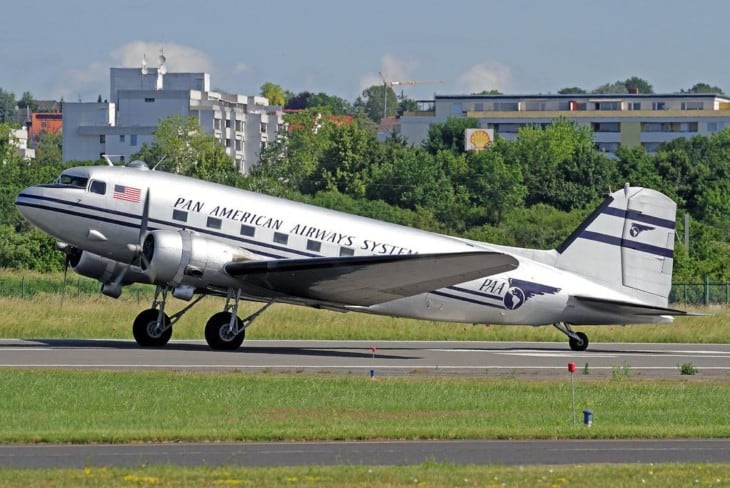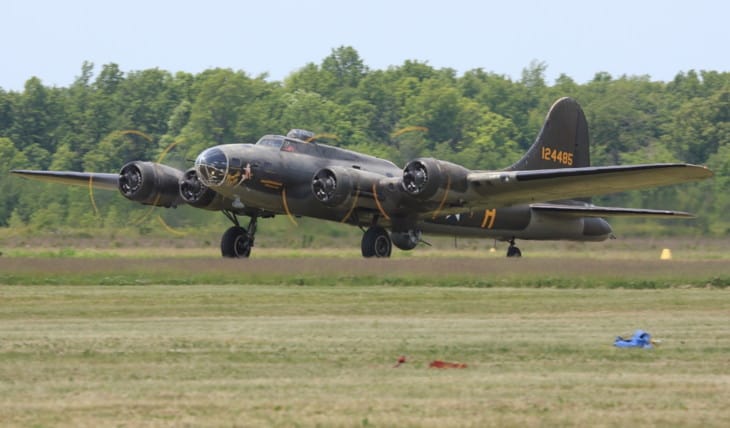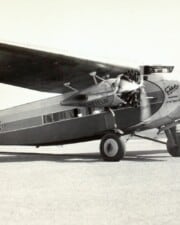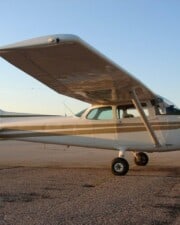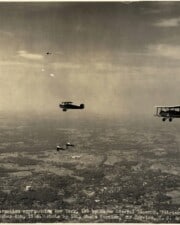The 1930s was an important decade in aviation history. The rudimentary designs of the first few decades of airplanes gave way to more advanced designs that could fly further, carry more people, and were safer. What are the planes that best demonstrate these advances in technology? Read on to find out!
Table of Contents
The 1930s saw a number of important technological developments for flying. One of the most important developments was the switch to metal-bodied airplanes instead of the old standard — wood. Metal planes could fly further and were also more comfortable because the interior was actually climate-controlled. Military aircraft in particular became faster and performed better, which was important as World War II was just around the corner.
One of the main developments of the 1930s in terms of aviation culture is the growth of flying as a mode of transportation for passengers. New airplanes made flight more comfortable for the average civilian (although it was still a hair-raising experience) and more and more people took to the skies. The 1930s also saw the introduction of another staple of the flying experience—the stewardess.
There are a few criteria this list could use to discuss the best aircraft of the 1930s. Which ones were the fastest or performed better or were the most comfortable? However, this list focuses on the airplanes that were the most influential for the development of the history of flight.
10. Grumman FF-1

The Grumman FF-1 is one of the pioneers in the field of naval aviation. This aircraft was one of the first made by the Grumman company, a risky venture founded right after the stock market crash of 1929.
Although the company was founded in 1929, Grumman didn’t submit the prototype of this model, the XFF-1, to the Navy until 1931. The aircraft resoundingly won a competition held by the Navy to find a new fighter plane. For several years, pilots honed their skills on this plane, which they affectionately called the “FiFi.”
The Grumman FF-1 earns its place on the list thanks to the technological innovation it brought to the field of fighter planes, including retractable landing gear, enclosed cockpit, and all-metal body, one of the major innovations of the 1930s in aviation technology. It also marked the beginning of Grumman’s successful collaboration with the Navy.
9. Heinkel He-178

The end of the 1930s marked a decisive transition from the early days of aviation to more modern aviation. Signaling what would soon become “the jet age” was the Heinkel He-178, the first plane to fly based on turbojet power. It took its first flight on August 27, 1939, at the very end of the decade.
Jet engines were a crucial innovation in aviation history that allowed planes to fly faster than ever before. They work by spraying compressed air with fuel and expelling burning gasses, which thrust the engine forward faster than previous engines.
The Heinkel He-178 was not widely flown—in fact, only two prototypes were ever made and both were lost to Allied bombing raids. However, its development merits inclusion on this list because it pushed the overall history of aviation forward, even though the jet engine wouldn’t catch on widely for a few more years.
8. Grumman J2F ‘Duck’
More info: Grumman J2F Duck
The Grumman JF affectionately nicknamed the “Duck,” is another airplane that resulted from Grumman’s productive collaboration with the Navy. This plane was one of the most popular amphibious biplanes since its creation in 1937 to 1950.
The Grumman JF series was used by the U.S. Coast Guard and other military and civilian agencies around the world primarily for search and rescue operations. The ungainly planes looked faintly ridiculous with their bulky floats, but they were beloved by pilots thanks to their reliability and showed people new possibilities for using airplanes.
The JF-2, one of the newer models in the JF line, also participated in important exploration expeditions such as flights to Antarctica. The 1930s still marked a time when aviation was new, and people were testing the boundaries of what airplanes could do.
7. Piper J-2 Cub
More info: Piper J-2 Cub
To this day, the Piper J-2 Cub is one of the most recognizable airplanes ever produced. Also called the Taylor J-2 Cub, this light biplane was envisioned in the 1930s as a small, relatively affordable plane people could buy or rent to learn how to fly. The goal was to make flying more accessible. Original models were very rudimentary without even a compass, which was thankfully added very soon.
One of the most distinctive features of the Taylor J-2 Cub is its color. Now called “Cub Yellow,” the brightness makes it easy to tell these planes apart from similar models even if you’re not an aviation expert.
This two-seater plane brought aviation if not to the masses, to a larger crowd of private individuals. It was very popular on private airfields and in flight schools as beginner pilots found the controls easy to understand.
6. Douglas DC-2
More info: Douglas DC-2
The early days of passenger travel via aircraft was more an exercise in adrenaline than just another mode of transportation. Early models were uncomfortable, freezing cold, and often turbulent. It’s no surprise that few people except for the very brave chose to fly, at least until the invention of the Douglas DC-2 revolutionized the passenger aircraft industry.
The DC-2 was larger than previous aircraft and could fit 14 passengers. However, even more important than its size was its speed: the DC-2 was the fastest commercial airplane, and it wasn’t close. For the first time, someone could fly from coast-to-coast in just one night (with several stops along the way—we weren’t quite in the jet age yet). It quickly became the preferred airplane for airlines in the United States and abroad.
The DC-2 won several awards and even developed a military version before getting overshadowed by the DC-3 (more on that later).
5. Grumman F4F Wildcat
More info: Grumman F4F Wildcat
As the end of the decade rolled around, airplanes became an even more important part of global military production. Military chiefs sensed that war was on the horizon (although maybe not all of them realized how terrible World War II would be) and invested in new equipment. Many of the airplanes on this list, such as the Grumman Wildcat, were developed in the 1930s but reached their glory days in the 1940s.
The F4F Wildcat was the first of Grumman’s monoplanes after half a decade of producing biplanes. It signaled a new direction for the company.
The Wildcat saw lots of action in the Pacific theater, where the sturdiness of the body could withstand the faster Mitsubishi Zero used by the Japanese.
4. Messerschmitt Bf-109a
More info: Messerschmitt Bf 109
When the prototype of the Messerschmitt Bf-109a first took flight in 1935, it’s unclear how many people realized how important this plane would be for military aviation history. By the end of the war, it was certainly clear as the plane was the second-most produced plane in history.
For years, the Messerschmitt was the superior fighting plane around. It outperformed competitors in speed, climbing, diving, and agility.
The Messerschmitt Bf-109a allowed Nazi Germany to dominate the skies in the beginning of World War II, including during the Battle of Britain.
3. Hawker Hurricane
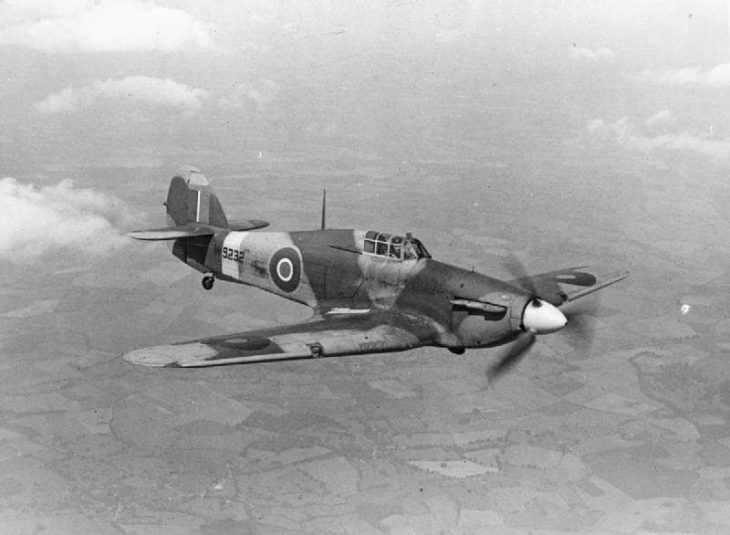
On the other side of the Battle of Britain, the Hawker Hurricane was the backbone of the RAF in the 1930s and 1940s.
The Hurricane may not have been as fast or maneuverable as the Messerschmitt Bf-109a, but it was exceptionally robust and could take a beating without falling down.
Although it was invented in the mid-1930s, the Hawker Hurricane didn’t show its full capabilities until the Battle of Britain, where it made up most of the RAF and destroyed 4/5ths of the total German planes destroyed during that time.
2. Douglas DC-3
More info: Douglas DC-3
The Douglas DC-3 deserves to be on this list for revolutionizing passenger air transport even more than its predecessor the DC-2 did.
Before the DC-3, air travel was an uncomfortable business. The DC-3 introduced new innovations that made flying in a plane seem luxurious indeed, such as plush seats and sleeping berths for overnight flights. Airlines quickly snapped up the DC-3 and within a few years, Douglas planes transported 90% of the nation’s airline passengers.
The DC-3 also revolutionized the aircraft industry as a whole because it was commercially successful, turning a profit just by carrying passengers (previous models relied on government subsidies). It was also versatile and several DC-3s were converted to military use during World War II.
1. Boeing B-17 Flying Fortress
More info: Boeing B-17 Flying Fortress
The Boeing B-17, affectionately known as the Flying Fortress, is one of the most innovative aircraft to come out of the 1930s. Its invention would influence the tide of World War II, which not many other machines can say.
The B-17 was one of the first bombers in the modern sense of the world. It was the first to have a flight deck and one of the first to have four engines and the capability to continue flying even if one of those engines stopped working.
The nickname “The Flying Fortress” came from the journalist Richard Smith, who witnessed the test flight and was impressed by the number of machine gun mounts.
References ▾
Related Posts

